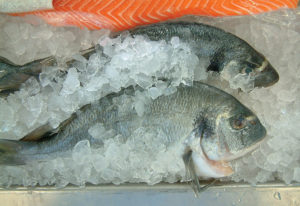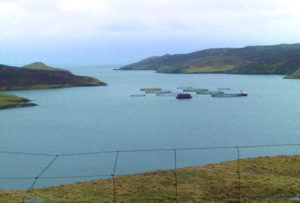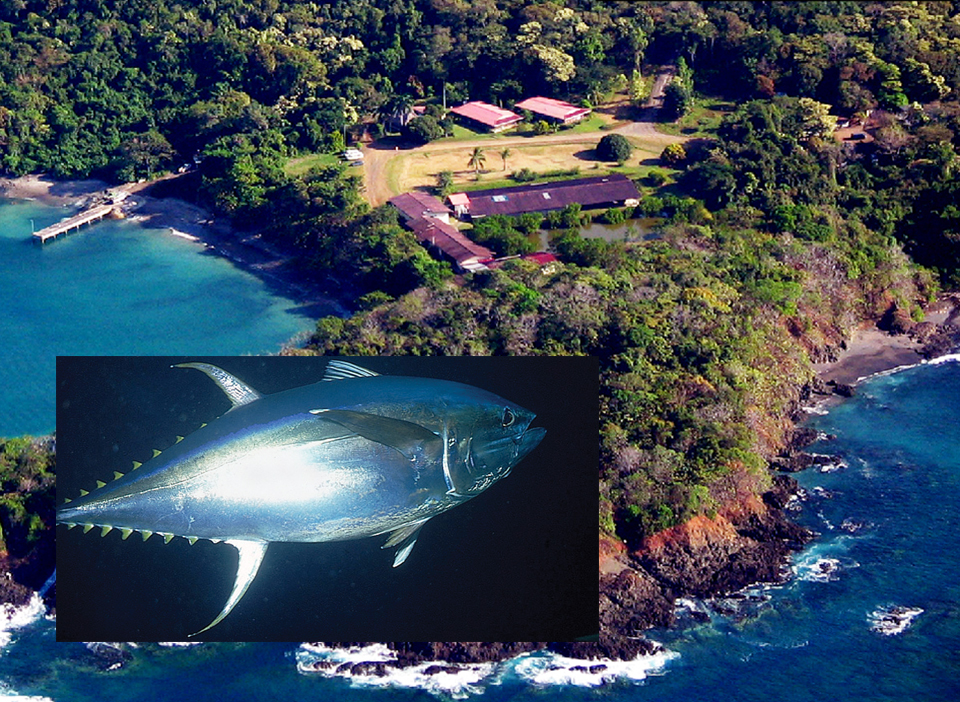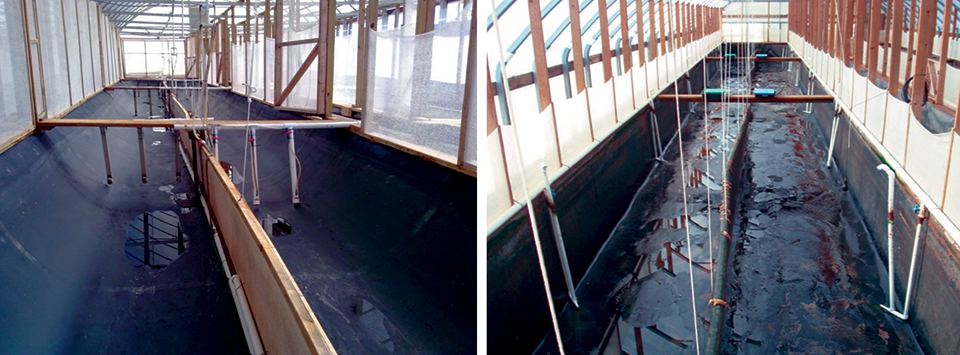Method evaluates impacts of a product, from raw material through production, use and disposal

The food industry is likely to come under greater scrutiny over coming years as world population rises put pressure on food stocks and prices with inevitable strain on the environment. There is also significant pressure on energy resources, in which the production of food using carbon-intensive fuels is linked to accelerating global climate change.
The policies of governments and non-governmental organizations on food are therefore moving to a more holistic approach of environmental impact assessment, of which life cycle assessment (LCA) is a part. LCA is also becoming more important in the world of corporate social responsibility, for consumers increasingly consider sustainability as they make seafood purchases.
Life cycle assessment
Life cycle assessment studies the environmental and other potential impacts of a product throughout its life, starting at raw material and following it through production, use and disposal. LCA can also be used to assess the environmental impacts of a process or service from design to disposal, across the entire life cycle.
The general categories of environmental impacts considered include resources used and ecological consequences. Governed by the ISO 14040 and 14044 standards, LCA requires the gathering and appraisal of data on the inputs and outputs of material, energy and waste flows of a product.
LCA consists of four complementary elements:
- Goal definition and scoping. This includes a full description of the product, process or activity. Why the assessment is required should be established, as well as the boundaries and environmental effects to be identified and reviewed.
- Inventory analysis. Energy, water and materials usage and environmental releases need to be determined.
- Impact assessment. This is examination of potential human impacts, the effects of energy, water and material usage, and the environmental releases identified in the inventory analysis.
- Interpretation. The evaluation of the results from the inventory analysis assessment is tailored to the product, process or service. It must reflect clear understanding of the boundaries and assumptions used to generate the results.
LCA can help identify ways to mitigate environmental impacts and generate cost savings. It can also be used for assessing risks to improve systems, such as in risk management. In addition, LCA can support decision making for companies, such as purchasing, product design, process selection and waste management strategies.
Stages of LCA
The use of energy at different stages during production requires an assessment of the overall impact on the environment. This is not dependent on a single event, but a combination of all the processes. LCA considers inputs from the raw material extractions until disposal. During the transformation, manufacturing and packaging are involved, as well as transportation for distribution.
For the entire life cycle in the production of food, the agricultural inputs are the seeds, fertilizers and water. The produce is then harvested and transported to factories for processing. Energy use is associated with this process, and fossil fuel inputs release greenhouse gases during cultivation, conversion and distribution, hence contributing to the environmental footprint. The results of operating procedures need to be compared to other standards to establish the impacts on the environment.
Aquaculture assessment

In aquaculture, feed is the most significant input, but larvae or fingerlings, fuel and occasional medicinal treatments are also required. These key inputs are being measured more closely than in the past and are even published in annual corporate sustainability reports.
A primary measurement related to the productivity of feed is the feed-conversion ratio (FCR). The FCR measures the volume of feed input against the weight of harvested seafood. Salmon production has rather low FCRs, making it competitive in feed use against other proteins and less affected by high feed prices than pork or beef farming. On the basis of fish protein, current salmon production techniques can achieve FCR values below 1, making the industry a net provider of fish protein to the human diet.
Advances in feed technology continually lower the environmental footprint of salmon farming, both as a user of wild fish in feed and in carbon emissions. Shrimp feed needs high protein content as well as lipids, fiber and other essential nutrients. A wide variety of ingredients, from algae to poultry trimmings, are being investigated as replacements for the traditional fishmeal protein base in shrimp diets.
Low-impact species
Of worthy mention due to their low impacts on carbon emissions during aquaculture are tilapia, carp, oysters and mussels (Table 1). Tilapia and carp can both be grown in aquaponics with horticulture, living in recirculation systems with very little feed inputs needed, as the plants and fish feed off each others’ waste. Seen as a promising sustainable food production method for the future, this approach is also known as integrated multitrophic aquaculture.
Davies, Carbon emission values, Table 1
| Product | kg Carbon Dioxide/kg | Standard Deviation | Source |
|---|---|---|---|
| Salmon | 3.40 | 1.1 | Ayer and Tyedmers, 2009 |
| Salmon | 3.40 | 1.1 | Mungkung and Gheewala, 2007 |
| Salmon | 3.40 | 1.1 | Friend of the Sea, Seafish |
| Shrimp | 11.10 | 3.3 | Mungkung, 2005 |
| Shrimp | 11.10 | 3.3 | Sun, 2009 |
| Shrimp | 11.10 | 3.3 | Friend of the Sea |
| Tilapia | 1.67 | 0 | Troell et al., 2004 |
| Carp in RAS | 0.80 | 0 | Friend of the Sea |
| Mussels | 0.01 | 0 | Thane |
FCRs in carp culture are commonly as low as 0.3. Fishmeal ratios are on a downward trend, and from a fish sustainability stance, can be 1 in fish in:fish out ratios. Fishing makes up a major part of the aquaculture fishmeal supply, with wild-capture marine protein added to feed, as well as trimmings from fish processing.
Mollusks such as oysters and mussels are grown with only natural feed inputs from the nutrients in the water in which they are raised. This means their feed inputs are zero, so the species have minimal carbon emissions from their growing and harvesting.
Protein comparisons
Carbon footprint assessments of various farmed seafood compare well to those of other protein sources. In Sweden, Skretting found that beef production “cost” about 14 kg carbon dioxide per kg of edible meat. Pork came in with a rating of about 4.8 kg carbon dioxide/kg. Chicken rated 1.9 kg – just below the 2.0 kg carbon dioxide/kg meat mark for salmon.
Both Denmark and Belgium have studied the impacts of their meat industries, as shown in Table 2. The average carbon dioxide footprint of the top 10 retail seafood species in the United Kingdom is included for comparison. Aquaculture is generally much more efficient than beef and lamb production, and modern salmon farming, rated better than even chicken farming, has the lowest carbon value.
Davies, Carbon emission values for protein sources, Table 2
| Country | Product | kg Carbon Dioxide/ kg | Source |
|---|---|---|---|
| Denmark | Beef | 22.50 | Weidema, 2003 |
| Belgium | Beef | 34.00 | Nemry et al., 2001 |
| Sweden | Beef | 14.00 | SIK* |
| Denmark | Pork | 3.98 | Weidema |
| Belgium | Pork | 11.00 | Nemry |
| Sweden | Pork | 5.00 | SIK* |
| Denmark | Chicken | 3.10 | Weidema |
| Belgium | Chicken | 7.00 | Nemry |
| Sweden | Chicken | 1.80 | SIK* |
| Belgium | Lamb | 50.00 | Nemry |
| United Kingdom | Seafood (average of 10 products) | 6.10 | Davies, 2009 |
| United Kingdom | Farmed salmon | 1.70 | Davies, 2009 |
*Swedish Institute for Food and Biotechnology
(Editor’s Note: This article was originally published in the May/June 2010 print edition of the Global Aquaculture Advocate.)
Now that you've reached the end of the article ...
… please consider supporting GSA’s mission to advance responsible seafood practices through education, advocacy and third-party assurances. The Advocate aims to document the evolution of responsible seafood practices and share the expansive knowledge of our vast network of contributors.
By becoming a Global Seafood Alliance member, you’re ensuring that all of the pre-competitive work we do through member benefits, resources and events can continue. Individual membership costs just $50 a year.
Not a GSA member? Join us.
Author
-
William Davies
Humber Seafood Institute
Grimsby Institute of Further and Higher Education
Grimsby DN37 9TZ
United Kingdom[107,117,46,99,97,46,121,98,115,109,105,114,103,64,119,115,101,105,118,97,100]
Tagged With
Related Posts

Health & Welfare
10 paths to low productivity and profitability with tilapia in sub-Saharan Africa
Tilapia culture in sub-Saharan Africa suffers from low productivity and profitability. A comprehensive management approach is needed to address the root causes.

Aquafeeds
A look at protease enzymes in crustacean nutrition
Food digestion involves digestive enzymes to break down polymeric macromolecules and facilitate nutrient absorption. Enzyme supplementation in aquafeeds is a major alternative to improve feed quality and nutrient digestibility, gut health, compensate digestive enzymes when needed, and may also improve immune responses.

Health & Welfare
Achotines laboratory home to continuing studies of tuna early life history
The Inter-American Tropical Tuna Commission Achotines Laboratory in southern Panama is the world’s only facility with nearly year-round availability of tuna eggs and larvae. A study is comparing the reproductive biology, genetics and early life history of yellowfin and Pacific bluefin tuna.

Responsibility
Advances in super-intensive, zero-exchange shrimp raceways
Research at the Texas AgriLife Research Mariculture Laboratory is investigating ways to improve the economic viability of super-intensive raceways for shrimp production.


